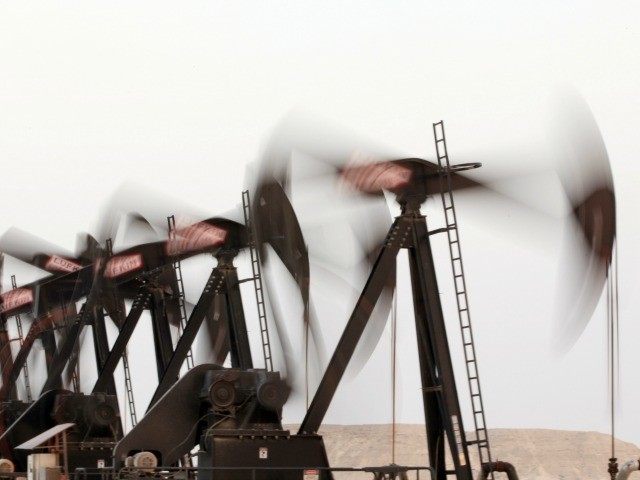The U.S. Energy Information Agency (EIA) reported that domestic crude oil productionfor the week ending May 22 surged by 304,000 barrels per day (bpd) to a 44-year high of almost 9.566 million bpd. The latest production numbers come on the heels of Breitbart News’ report that the Organization of Petroleum Exporting Countries (OPEC) had effectively conceded defeat in its battle against U.S. shale oil competition.
As consumers gain confidence gasoline prices will not rebound, America appears on the cusp of major consumer-led economic boom.
OPEC met in Vienna, Austria on Tuesday in a desperate attempt to try to rescue the collapsing oil income of member states as a result of U.S. production more than doubling since the September 2008 Great Financial Crisis. After peaking at almost a trillion dollars in 2012, OPEC’s net income fell to $703 billion in 2014 and will be lucky to hit $446 billion this year.
Desperate to try to stop the America’s shale-fracking oil boom from taking more market share, Saudi Arabia led OPEC to push up crude production up to 31 million bpd. But the effort only caused much lower prices as U.S. oil production still continued to accelerate. In a report distributed at OPEC’s meeting, analysts predicted the cartel’s market share will drop to 28.2 million bpd over the next five years.
Though the number of North American oil rigs in service dropped by over 60 percent since the fall 2014, American crude oil production has grown by over one million bpd. The one-week production spike from 9.262 million bpd to 9.566 million bpd for the week ending May 22 is the fourth-largest jump since 2000, and the largest not associated with some weather of international crisis.
OPEC countries use their export income to buy their citizens’ loyalty. With U.S. imports falling by 750,000 bpd in just the last two months, collapsing revenue is creating huge political chaos for Venezuela and a number of other OPEC members.
Charles Dumas at Lombard Street Research coined the term the “Eurasian Savings Glut” to describe the transfer of wealth from the U.S. and Europe to Asia and oil exporters over the last two decades. But that flow of wealth is rapidly reversing as EIA now forecasts the U.S. led shale-fracking oil production “will grow until at least 2017.”
According to Dumas, the reason U.S. economic growth went negative by 0.7 percent was a transition from capital-intensive growth from the oil sector build out, to a more sustainable consumer-led expansion later this summer.
Unsure if the low gasoline prices were temporary, Americans decided to save “the real-income windfall from the oil price crash of last autumn and winter.” Lombard points out that the personal savings rate jumped 1.5 percent to 4.6 percent in last quarter of 2014. It then jumped again to 5.5 percent in the first quarter of 2015. If consumers trust that gasoline prices will stay low, the “permanent income” effect of almost 2.5 percent more in disposable income will encourage Americans to hit the consumption accelerator.

COMMENTS
Please let us know if you're having issues with commenting.